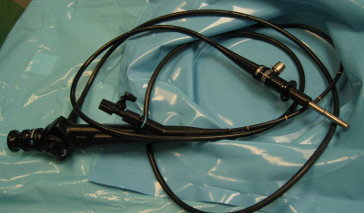Endourology refers to a number of minimally invasive procedures performed within the body using surgical instruments and tubes with lighted cameras and is an alternative to traditional open surgery. These instruments, which include laparoscopes and endoscopes, can all be easily inserted into the urethra (the tube through which urine leaves the body), or through a small incision in the abdomen, and guided to the appropriate location.
How Does Endourology Work?
The word "endo" means "within." This term is tacked onto "urology" because endourology procedures use specialized cameras and instruments to view the urinary tract and male reproductive system from the inside, often without making any incisions. Instead, a thin tube with a lighted camera on the end (endoscope) is inserted into the urethra (the tube that allows urine to pass out of the body) and passed either up the urinary tract (from the bladder to the kidneys) or through one of the male reproductive organs. If necessary, thin instruments can be inserted to remove stones, strictures, or scar tissue that leads to blockages. Examples of instruments used include:
- Cautery (including electric currents and lasers) to seal off blood vessels or to remove tissue
- Graspers
- Lasers
- Miniature stone retrieval baskets
- Scalpels
In some instances, such as when the organ can not be accessed easily, a small cut may be made in the skin to allow the scope entry.
Endourology Benefits
When compared to open procedures, endourology offers a number of benefits, including:
- Less bleeding
- Faster recovery times
- Less pain
- Decreased risk of infection
While many benefits to endourological approaches exist, not all patients are candidates for this minimally invasive surgery. If the urinary tract is not accessible due to an obstruction or stricture, or if a health condition puts the patient at risk, an open surgical approach will likely be used.
Endourology Procedure Types
The four most common endourology procedures are:
- Cystoscopy, a long, thin tube with a camera on its end (cystoscope) is inserted into the urethra and advanced up to the bladder. This procedure can be diagnostic, allowing the surgeon to look for problems in the urinary tract, such as blockages caused by polyps, tumors, or stones; and to determine the cause behind repeated urinary tract infections, blood in the urine, and incontinence. Instruments can be passed through a hollow section of the scope to remove obstructions and tissue samples for biopsy, as well as treat bleeding in the bladder.
- Nephroscopy requires a small incision to be made in the patient's back. A flexible nephroscope is then guided to the renal pelvis (funnel-like opening that moves urine from the kidneys to the ureters) and into the kidneys. This approach is particularly useful for patients who have lower pole kidney stones and for obese patients who may not be candidates for procedures such as lithotripsy, which breaks up the stones with external shock waves. The scope has a suction function where the stones can be removed and has an opening to which instruments can be passed through to extract and/or treat tumors in the kidney lining.
- Urethroscopy uses a small, flexible scope with a camera on its tip to visually examine the urethra and bladder muscles, often to assess the cause of incontinence. When cutting instruments are inserted through the scope, this procedure can be used to treat strictures or scarring in the urethra by clipping and removing the obstructive tissue. The tissue may then be discarded or sent to a lab for inspection.
- Ureteroscopy requires a thin scope to be inserted into the urethra and up to the ureter so that a laser beam can be passed through its hollow center to break up large or dense kidney stones. A wire basket or graspers may also be inserted, and are typically used to retrieve stones that are small in size.
These endourology procedures are most often performed on an outpatient basis, provided the patient does not have other complicating factors that would require a hospital stay.
Endourology Complications
While endourology procedures tend to be safe, perhaps 1 percent of all patients experience complications. These include:
- Infection
- Redness at the insertion site
- Discharge or pus
- An allergic reaction to anesthesia
- Inflammation
- Perforation of an organ
- Hemorrhaging
- Infection in the area of the body where the endoscope was inserted
- Spread of cancerous cells during the removal of cancerous tissue
References:
Khanna, R. (2011). Instrumentation in endourology. Therapeutic Advances in Urology.
Cystoscopy and Ureteroscopy. (2009). National Kidney and Urologic Diseases Information Clearinghouse. NIH Publication No. 09-4800
Your Urinary System and How It Works. (2007). National Kidney and Urologic Diseases Information Clearinghouse. NIH Publication No. 07-3195
Eke, N. (2000). Major surgical complications from minor urological procedures. Journal of National Medical Association.


